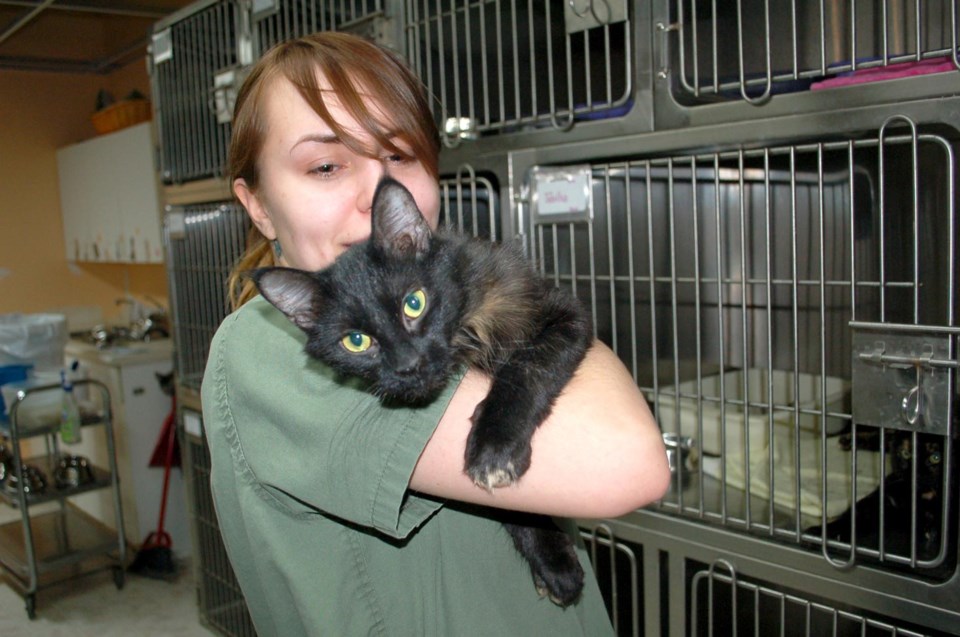There is an abundance of cats and canines at the Estevan Humane Society's animal shelter heading into what is expected to be a busy spring season.
Management at the shelter indicated last week that the cat and kitten population is now at its maximum level with 41 felines of various types and ages now in their care.
"Once the cages are full, that's it. We don't euthanize we take care of them," said employee Britni Wallioko. So when the population maxes out, owners of cats and kittens who may want to surrender them to the shelter, will have no luck, nor will those who rescue them only to drop them off at the shelter's doorstep, which is something that has happened a few times this winter, especially during the recent cold snaps.
The dog population is also near the breaking point, but not as desperate as the cat and kitten situation. There were 12 canines in the society's care on March 6, but there was an expectation that two were on the verge of being adopted out, which would ease the kennel overload.
Shelter employees said they welcome visitors to the shelter, even if they aren't in the immediate mood or position to adopt a cat or dog and, of course, any volunteer assistance and donations are welcomed.
The cat population consists of mature and older cats, as old as 14 years or more and as young as one week since one pregnant female has since given birth to a litter of seven kittens that are just now opening their eyes. Most of the cats are of varying ages, they said, are playful and had adjusted well to their new found domestic home, but would probably fare even better with a permanent residency.
"There are purebreds and mixed breeds, both dogs and cats," said one shelter worker who added that it was very difficult to have to say no to a few recent callers who wanted to surrender their cats to the shelter, simply because there was no more room. She noted that sanitation and safety issues and regulations had to be followed so it was hoped that there might be a few feline adoption opportunities coming through the door soon so that they could again take in rescued strays or surrendered cats.
The harsh winter conditions have led to the significant increase, they suggested, since people were probably caring enough to rescue the cats from the extreme cold, but weren't able to continue to house and feed them, which naturally led them to the humane society, which is now filled to the brim and unable to comply with further requests until the population is reduced.




